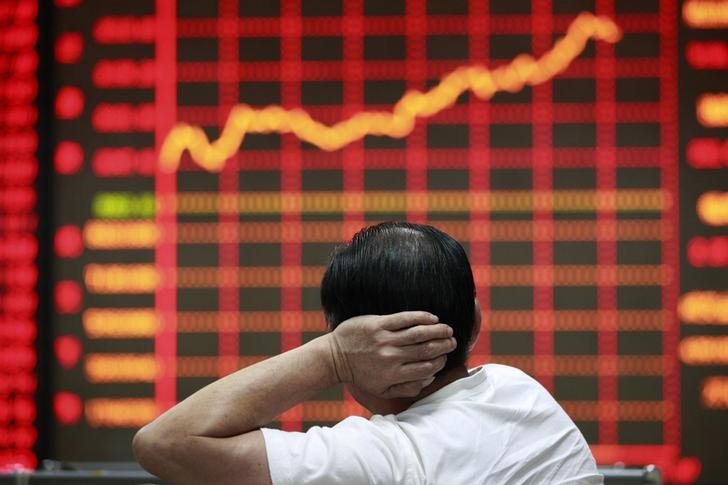Bill Gross warns on gold momentum as regional bank stocks tumble
Investing.com-- The outlook for Asian economies improved marginally after the U.S. and China toned down their respective trade tariffs, although growth is still expected to slow amid slower exports and manufacturing investment, UBS analysts said.
Asia Pacific gross domestic product growth is now expected to average at 4% in 2025, UBS said, compared to 4.6% in 2025. Excluding Japan, GDP is expected to slow to 4.4% from 5.1%.
UBS noted that first-quarter GDP growth was better than feared, remaining largely in line with the fourth quarter of 2024, thanks to resilience in the greater China region.
But headline GDP growth “is peaking” in some previously fast growing economies, especially Malaysia and Singapore, UBS said. South Korea stood out as one of the weakest, although data released this week showed that South Korea’s Q1 GDP was better than initially estimated.
UBS’ base case is that U.S. trade tariffs will moderate further in the coming months, which would offer “significant relief” to growth. UBS expects the overall U.S. tariff rate to decline to 15% to 20% by end-2025, from prior expectations of 25% to 30%, which were from before Washington and Beijing agreed to a temporary trade deal in May.
Export strength is expected to persist in the second quarter, amid extended front-loading by western buyers. But this growth is expected to wane starting from the third quarter, UBS said, although the overall trajectory still depended on where U.S. tariffs will settle.
But UBS warned that some higher tariffs were still to come, especially given that U.S. President Donald Trump has threatened to tariff semiconductors and pharmaceutical products.
India is expected to largely outperform other major global economies in 2025, with UBS expecting real GDP growth of 6.8% in 2025. This comes after India’s March quarter growth was also much better than expected, with the country facing relatively fewer headwinds from U.S. trade tariffs.
Malaysia, Indonesia, and the Philippines are also expected to clock GDP growth of 4%, 4.7%, and 5.8%, respectively, in 2025.
But Japanese GDP growth is expected to remain sluggish at 0.6%, while South Korea is expected to slow to 1%. This, along with an expected 1% growth in New Zealand, is among the worst performers in APAC for 2025.
Mainland Chinese growth is expected at 4% in 2025, UBS said, lower than the government’s 5% annual target.
Growth in the second half of 2025 is expected to see some support from lower interest rates all round, especially if weakness in the U.S. economy invites more cuts by the Federal Reserve. Inflation levels are also expected to moderate in the region.
